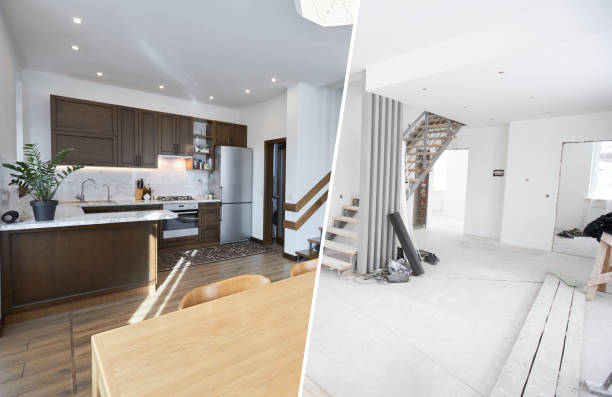Renovating your home can be an exhilarating experience when improving its aesthetic appeal and functionality. One pivotal step in any renovation project is accurately measuring windows. Precise measurements ensure that new windows fit correctly and help homeowners make informed decisions regarding energy efficiency, aesthetics, and home value. In this article, we’ll delve into the importance of precise window measurements, various techniques to achieve accuracy, and how to avoid common pitfalls in the measuring process.
Why Accurate Window Measurements Matter
Accurate window measurements are crucial for several reasons, ranging from aesthetics to energy efficiency. When windows are measured incorrectly, it can lead to poor-fitting windows, resulting in drafts and increased energy costs. According to the U.S. Department of Energy, improper sealing around windows can account for up to 25% of heating loss in a home.
Aesthetics matter as windows significantly influence the exterior look of a house. Obtaining the right measurements is key to ensuring a perfect match between the new windows and your home’s design.
Incorrect measurements can lead to financial repercussions. If the windows do not fit properly, it often results in costly modifications or replacements, thus escalating renovation budgets. Understanding the importance of accurate measurements can save both time and monetary resources during renovations.
Tools for Measuring Windows
To measure windows accurately, you will need several tools. A reliable tape measure (preferably at least 25 feet) is fundamental for taking precise measurements. Having someone to assist you while measuring can be beneficial, as it helps ensure accuracy. In addition to a tape measure, a level can help you check if the existing window frame is perfectly square, while a notepad and pencil will ensure that you document all measurements for future reference.
Investing in a laser distance measurer can simplify the measuring process further. This tool provides quick and precise measurements, reducing the risk of human error often associated with traditional tape measures. In scenarios where windows are situated on upper floors or hard-to-reach places, using a laser distance measurer can save time and enhance the safety of the task.
Step-by-Step Guide to Measuring Windows
Measuring a window requires specific steps to ensure accuracy. Begin by measuring the width of the window opening from inside edge to inside edge, which is known as the rough opening. Record this measurement in your notepad. Ensure you measure at three points, the top, middle, and bottom, to capture any variances. Take the smallest of these widths to determine your window size, as some openings can vary due to settling or structural changes.
Next, measure the height of the window opening in a similar manner, from the top inside edge to the bottom inside edge. Again, measure at three points, left, center, and right, and document the smallest measurement. This step is crucial as it ensures that the new window will be correctly positioned and sealed in the frame, enhancing its energy efficiency.
Common Pitfalls to Avoid
While this process might seem straightforward, several common pitfalls can undermine your accuracy. One of the most frequent mistakes is failing to measure at multiple points and always using the smallest measurement. If homeowners aren’t diligent, they can easily overlook variations in width or height caused by uneven walls or previous installations. Another common error is neglecting to level the measuring tape. If the tape is not level, it could lead to inaccurate dimensions, impacting the new window’s installation.
It’s important to consider the window frame material, wood, vinyl, or aluminum, as it may slightly impact the installation technique. Lastly, taking measurements in inclement weather may skew results. Rulers or tapes can flex in strong winds or rain, leading to errors.
When to Consult a Professional
Although many homeowners tackle window measurements independently, sometimes contacting experts may be beneficial. Professionals have the expertise to ensure all factors are considered, including local building codes and structural elements that an untrained eye might miss. They are equipped with tools that guarantee precision and are familiar with typical pitfalls that could trip up even the most experienced DIY-er. Another advantage of working with professionals is that they often provide a window size reference that adheres to standard measurements in your area, helping to streamline the renovation process. While it might incur an additional upfront cost, the investment often pays off in both time and minimized risk of errors.
Incorporating Energy-Efficient Windows
As you measure and prepare for window replacements, consider incorporating energy-efficient windows into your renovation. These windows are designed to minimize energy loss, enhance comfort, and reduce household bills. The U.S. Department of Energy indicates that energy-efficient windows can save households between $125 and $465 annually on energy bills, depending on where they live.
Energy-efficient windows often come with additional benefits, such as increased protection from harmful UV rays, thus prolonging the life of your interior furnishings. Most importantly, they may enhance the value of your home, making it more attractive to potential buyers in the future.
Careful and accurate measuring of windows is an important aspect of any home renovation. From understanding why precision matters to using the right tools and techniques, each step contributes to the project’s success. Avoiding common pitfalls and knowing when to consult professionals all play a significant role in ensuring that your windows enhance, rather than detract from, your home’s environment. Prioritizing energy-efficient options can lead to further long-term benefits that outweigh initial costs. Taking the time to measure windows accurately will lead to a rewarding renovation experience.
Published by HOLR Magazine.




